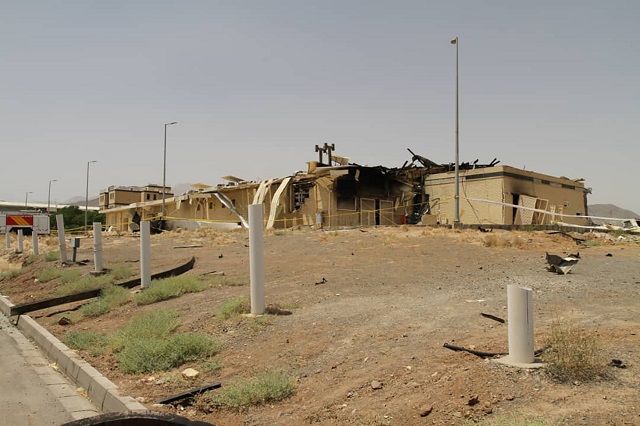
Washington, US | XINHUA | Some U.S. media has reported that the United States and Israel are involved in a joint strategy to conduct clandestine strikes on Iran’s nukes sites and carry out hits on certain generals.
It remains unclear if this assertion from a recent New York Times report is accurate. But if it is, that could lead to increased ire between Washington and Tehran — at a time when tensions are already running high.
Iranian Foreign Ministry’s spokesman Abbas Mousavi on Monday said during a press conference that Iran would “react decisively” if it is found that any government was involved in the recent explosion at the country’s Natanz nuclear facility.
Speculation is rife over who masterminded the strike, and whether the United States or Israel were involved.
The New York Times reported Friday that some officials said a “joint American-Israeli strategy was evolving — some might argue regressing — to a series of short-of-war clandestine strikes, aimed at taking out the most prominent generals of the Islamic Revolutionary Guards Corps and setting back Iran’s nuclear facilities.”
A fire broke out at a petrochemical complex in southwestern Iran city of Mahshahr on Sunday, according to the ISNA news agency. Local officials said the fire was caused by an oil leak and did not lead to casualties and damage.
One day before the blaze, a gas explosion shook a residential building in Tehran, leaving one person injured, the ISNA quoted the city’s fire department as saying.
While the administration of U.S. President Donald Trump has not announced a more aggressive stance against Iran, Brian Hook, the State Department’s special envoy for Iran, said last month that “timidity and weakness invite more Iranian aggression.”
“It sounds plausible,” David Pollock, a senior fellow at the Washington Institute for Near East Policy, told Xinhua, speaking of the possibility of a U.S.-Israeli joint strategy, such as the one the Times reported.
The Stuxnet cyberattack, revealed in 2010, has caused substantial damage to the nuclear program of Iran. Although neither country has openly admitted responsibility, the computer worm is widely believed to be a cyberweapon built jointly by the United States and Israel.
Recent attacks are similar to what happened a decade ago with the Stuxnet attack, “so I think that’s probably what we’re seeing here,” Pollock said.
Speaking of the recent explosion in the Natanz nuclear facility, Clay Ramsay, an Iran expert at the University of Maryland, citing the possibility of cyberattacks, which means “the source of attacks might be outside Iran.”
Ramsay said the attacks were probably meant to provoke Iran into an unmeasured response that can then invite retaliation.
According to the Joint Comprehensive Plan of Action (JCPOA), known commonly as the Iran nuclear deal reached by relevant countries in Vienna five years ago, Iran, for the next 15 years, would only enrich uranium up to 3.67 percent and could not build any new heavy-water facilities. Iran has always maintained that it abides by the commitments.
However, the current U.S. administration announced Washington’s withdrawal from the JCPOA in May 2018 and reimposed sanctions against Iran, a widely criticized movement has thwarted other parties’ implementation of the agreement and led to continued tension over the Iranian nuclear issue.
******
XINHUA
 The Independent Uganda: You get the Truth we Pay the Price
The Independent Uganda: You get the Truth we Pay the Price



